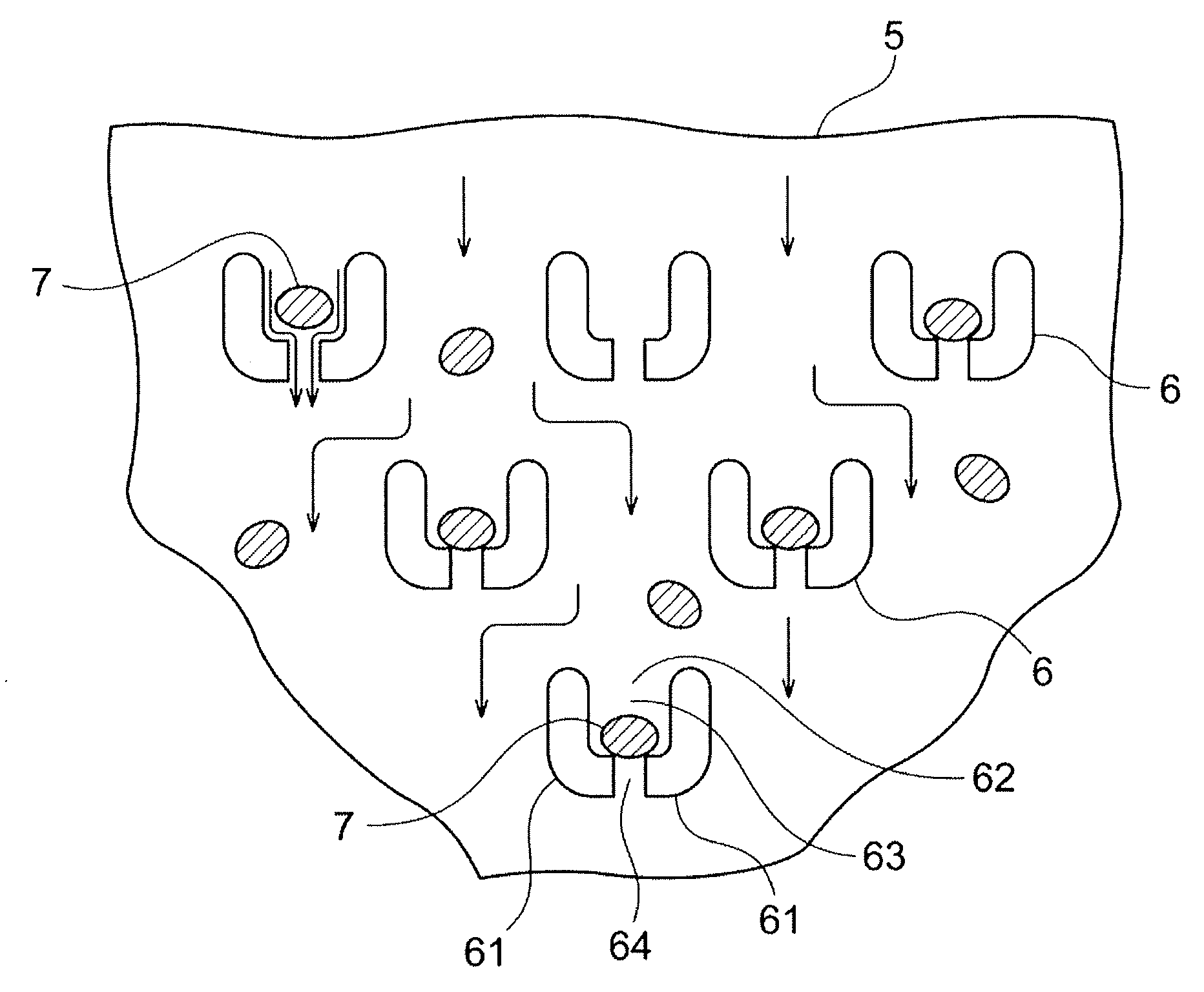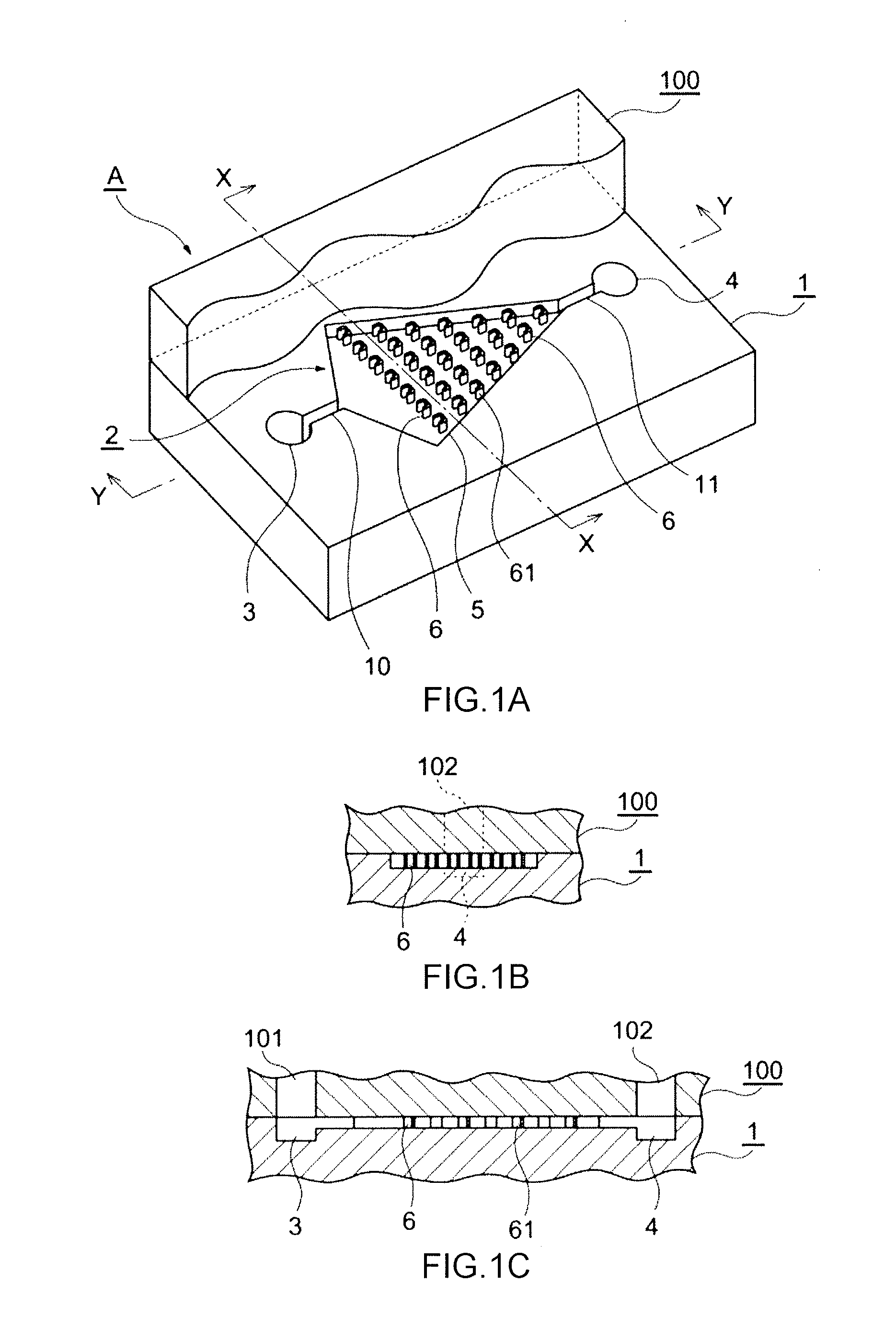Device having solid-liquid separation function, micro-tas device, and solid-liquid separation method
a technology of solid-liquid separation and micro-tas, which is applied in separation processes, laboratory glassware, instruments, etc., can solve the problems of difficult to simply install a filter in a micrometer-sized flow passage, -tas has a drawback, and the filter is difficult to mount in the flow passage without causing liquid leakage, etc., to achieve the effect of high rate of liquid flow with respect to the solid-liquid mixture, easy manufacturing and low cos
- Summary
- Abstract
- Description
- Claims
- Application Information
AI Technical Summary
Benefits of technology
Problems solved by technology
Method used
Image
Examples
Embodiment Construction
[0122]One example of a mode for carrying out the present invention is explained in conjunction with drawings. In this example, a device C having a solid-liquid separation function is, as shown in FIG. 12, used in a state where the device C is incorporated into a μ-TAS (Micro Total Analysis Systems) device body 21. The device C is explained along with one example of a manufacturing method of the device C.
[0123]FIG. 9(a) is a plan view of the μ-TAS device body 21 into which the device C having a solid-liquid separation function is incorporated, and FIG. 9(b) is a cross-sectional view of the μ-TAS device body 21 taken along a line G-G in FIG. 9(a). A cylindrically recessed portion 22 is formed in the μ-TAS device body 21. Assume that an inner diameter of the recessed portion 22 is M and a depth of the recessed portion 22 is N. At least one discharge groove 23 is formed on an inner bottom surface of the recessed portion 22 in a state where the discharge groove 23 extends from a center p...
PUM
| Property | Measurement | Unit |
|---|---|---|
| height | aaaaa | aaaaa |
| height | aaaaa | aaaaa |
| size | aaaaa | aaaaa |
Abstract
Description
Claims
Application Information
 Login to View More
Login to View More - R&D
- Intellectual Property
- Life Sciences
- Materials
- Tech Scout
- Unparalleled Data Quality
- Higher Quality Content
- 60% Fewer Hallucinations
Browse by: Latest US Patents, China's latest patents, Technical Efficacy Thesaurus, Application Domain, Technology Topic, Popular Technical Reports.
© 2025 PatSnap. All rights reserved.Legal|Privacy policy|Modern Slavery Act Transparency Statement|Sitemap|About US| Contact US: help@patsnap.com



